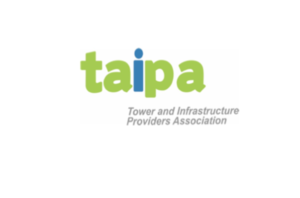
Highlights:
- Highlighted that government should extend the benefits of infrastructure status to tower industry which are already being provided to other sectors.
- Highlighted Non – discriminatory access to Right of Way to all stakeholders in the telecom sector i.e. TSPs and IPs
- Industry committed towards green sustainable telecommunication to reduce its reliance on Diesel – Already converted 100,000 sites consuming less than 1 litre of Diesel per day
Tower and Infrastructure Providers Association (TAIPA), apex industry association representing leading telecom tower and infrastructure providers with ATC Telecom Infra, ATC India Tower & ATC Telecom Tower, Indus Towers, GTL Infrastructures, Tower Vision India, Bharti Infratel and Reliance Infratel, in its Annual General Meeting 2017 emphasised the need of a robust telecom infrastructure to realise the Digital India mission as telecom infrastructure will enable various futuristic technologies such as 5G, IoT, M2M, artificial intelligence and virtual reality etc. It is imperative to develop ‘state of the art network architecture just like other infrastructure facilities such as water,sewage, railway, roads and transportation etc. as telecommunication services nowadays have become an integral and essential necessity of our daily lives.
The Annual General meeting witnessed participation by senior Government officials and industry players. To add to this list of eminent speakers, IT Secretaries of Haryana and Odisha presented their insights on policy implementation of their state and framework. Leading knowledge partners from Deloitte and Ernst & Young shared their views on the Roadmap and Regulatory Support for Expediting Robust Telecom Infrastructure.
In a written message, congratulating the industry association, Ms. Aruna Sundararajan, Chairman, Telecom Commission and Secretary (T), Department of Telecommunication (DoT) said Indian Telecommunication Sector has been at the core of social and economic development of this country and telecom infrastructure sector has been the bedrock for a Digital Economy. Telecommunication and Telecommunication Infrastructure is the backbone of Digital India, where future technologies like mobility, analytics, cloud, Internet of Things (IoT), Machine to Machine (M2M) Communications are playing a key role in implementing the Digital India vision. A robust telecom infrastructure will play a key role in seamless connectivity, which is the essence of true Digitisation.
The dignitaries also discussed key concern areas of the industry such as non-discriminatory access to Right of Way and inclusion of IP-1s in the RoW notified rules; extension of benefits under infrastructure status to tower industry; availability of Government resources such as Land and Buildings on a fair and non- discriminatory basis to both TSPs and IPs for installation of telecom infrastructure and alignment of States tower installation guidelines with the DoT guidelines/RoW Rules of November 2016.
In a video message Shri R S Sharma, Chairman, TRAI said I have been one of those who have believed that in the converged environment there is need of independent infrastructure players which will ensure orderly and stable growth of infrastructure. Further, it will also bring in economy of scale and the cost effectiveness due to the sharing of infrastructure at the backend. I also believe Infrastructure Players must have an active role in the provisioning of common duct, in-building solutions, pubic Wi-Fi and fibre lay etc.
While addressing the meeting, Mr. Akhil Gupta, Chairman, TAIPA said The success of Digital India, financial inclusion lies in making internet available at the bottom of pyramid. The telecom infrastructure industry faces glitches in network rollout especially in rural and semi-urban areas. Apart from this, it is very important that government ensure grid power supply to operate telecom tower sites in the upcoming National Telecom Policy (NTP) 2018.
While addressing the meeting, Mr. Tilak Raj Dua, Director General, TAIPA said The overall development of telecommunication services in the past few decades has been phenomenal with the help telecom infrastructure supporting these services at the backend. With the government’s thrust on Digital India and Smart Cities, it is needless to say that industry will unfold more new business avenues in the forthcoming time.”
Further to that, government should also ensure priority EB connections and quality power on preferential tariffs rather than the commercial tariffs; Safety and security of telecom infrastructure is another long-pending demand of the industry.
Further Mr. Dua added ” In order to realize these flagship program of government, it is imperative that sustained investments in this sector is safe-gaurded which will only happen with due regulatory and policy support from the Government.”
During the Annual General Meeting, the industry reiterated its commitment towards green sustainable telecommunication to reduce its reliance on Diesel as an alternative energy source by deploying long-life, fast-charging Lithium batteries; shifting of indoor sites to outdoor; alternate energy sources like solar, wind, etc. These efforts have already resulted into the conversion of over 100,000 sites as ‘Diesel Free Sites’ consuming less than 1 litre of Diesel per day.
On the occasion Mr. Umang Das, Vice Chairman, TAIPA said The growth in the Indian telecom and telecom infrastructure sector has been fuelled by various policies and regulatory reforms undertaken by the Government with a view to enable Ease of doing Business. As far as the telecom infrastructure is concerned, it needs to be leveraged to enable all citizens and businesses, both in rural and urban areas, to participate in the Online economy thereby ensuring equitable and inclusive development across the nation.
Telecommunication in India has emerged as a key driver of economic and social development in an increasingly knowledge intensive global scenario. The Indian telecommunication sector has undergone a revolutionary transition in the last two decades to become the World’s second largest telecommunication market with more than 1.1 billion subscribers connected through 4,50,000 towers mounted with over 15 lakh BTSs. As per the government report, the mobile sector’s contribution to GDP which is presently 6.5 percent and will increase to 8.2 percent by 2020.
For more information, please visit www.taipa.in



















